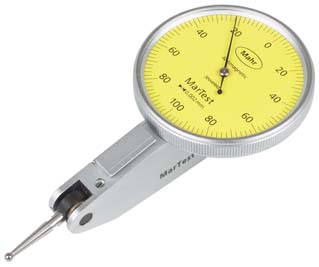Versatility of Test Indicators
Test indicators are referred to by their dial configurations, the most common of which are the front mount, top mount and side mount. There are also two different dial diameters (1.1" and 1.5"). Selection of a test indicator is dependent on how and where it will be used.

The probe or contact point of the indicator is part of a lever mechanism that transfers the motion to the working part of the indicator. At the point where the contact is attached, a swivel allows the contact to be positioned anywhere within a 180 degree arc.
Use of test indicators is quite straightforward, but there are two very important points to remember about the contact point.
The first is length. Because the indicator is based on a lever transfer, length is critical. A one-to-one ratio is set up with a standard indicator. Changing to a longer or shorter contact changes this ratio and can result in measurement errors in use. To read the remainder of this article "click here"
MarTest® - Test Indicators Since 1936 Mahr has been one of the leading global producers of test indicators, we have achieved this with the continuous advancement of our products and with unrelenting commitment to produce high quality products that not only meet customer requirements but also exceed them. We have also increased research and development in order to satisfy the demands and requirements of the market, however our core philosophy is to offer our customer a highly accurate and simple solution for various measuring tasks.
With the MarTest series of test indicators there is not just a broad product range, but also a wide variety of accessories at you disposal. The sensitive computer-optimized shockproof mechanism of the test indicator ensures maximum security and precision. MarTest is ideal for use in workshop conditions due to the dial being sealed, thus impervious to the penetration of liquids.
No comments:
Post a Comment